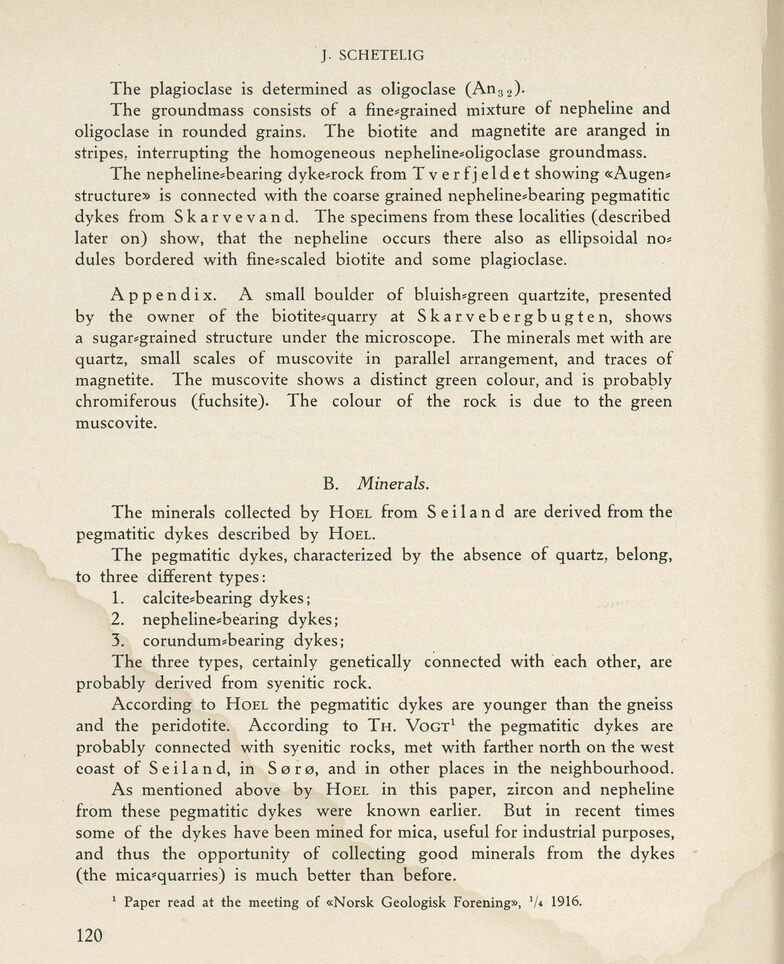
Full resolution (JPEG) - On this page / på denna sida - Sidor ...

<< prev. page << föreg. sida << >> nästa sida >> next page >>
Below is the raw OCR text
from the above scanned image.
Do you see an error? Proofread the page now!
Här nedan syns maskintolkade texten från faksimilbilden ovan.
Ser du något fel? Korrekturläs sidan nu!
This page has never been proofread. / Denna sida har aldrig korrekturlästs.
J. SCHETELIG
The plagioclase is determined as oligoclase (An32)-
The groundmass consists of a fine-grained mixture of nepheline and
oligoclase in rounded grains. The biotite and magnetite are aranged in
stripes, interrupting the homogeneous nepheline*oligoclase groundmass.
The nepheline*bearing dyke»rock from Tverfjeldet showing «Augen*
structure» is connected with the coarse grained nepheline*bearing pegmatitic
dykes from Skarve vand. The specimens from these localities (described
later on) show, that the nepheline occurs there also as ellipsoidal no*
dules bordered with fine»scaled biotite and some plagioclase.
Appendix. A small boulder of bluish*green quartzite, presented
by the owner of the biotite*quarry at Skarvebergbugten, shows
a sugar»grained structure under the microscope. The minerals met with are
quartz, small scales of muscovite in parallel arrangement, and traces of
magnetite. The muscovite shows a distinct green colour, and is probably
chromiferous (fuchsite). The colour of the rock is due to the green
muscovite.
B. Minerals.
The minerals collected by Hoel from Seiland are derived from the
pegmatitic dykes described by Hoel.
The pegmatitic dykes, characterized by the absence of quartz, belong,
to three different types:
1. calcite»bearing dykes;
2. nepheline*bearing dykes;
3. corundumsbearing dykes;
The three types, certainly genetically connected with each other, are
probably derived from syenitic rock.
According to Hoel the pegmatitic dykes are younger than the gneiss
and the peridotite. According to Th. Vogt1 the pegmatitic dykes are
probably connected with syenitic rocks, met with farther north on the west
coast of Seiland, in Sø rø, and in other places in the neighbourhood.
As mentioned above by Hoel in this paper, zircon and nepheline
from these pegmatitic dykes were known earlier. But in recent times
some of the dykes have been mined for mica, useful for industrial purposes,
and thus the opportunity of collecting good minerals from the dykes
(the mica*quarries) is much better than before.
1 Paper read at the meeting of «Norsk Geologisk Forening», V« 1916.
120
<< prev. page << föreg. sida << >> nästa sida >> next page >>